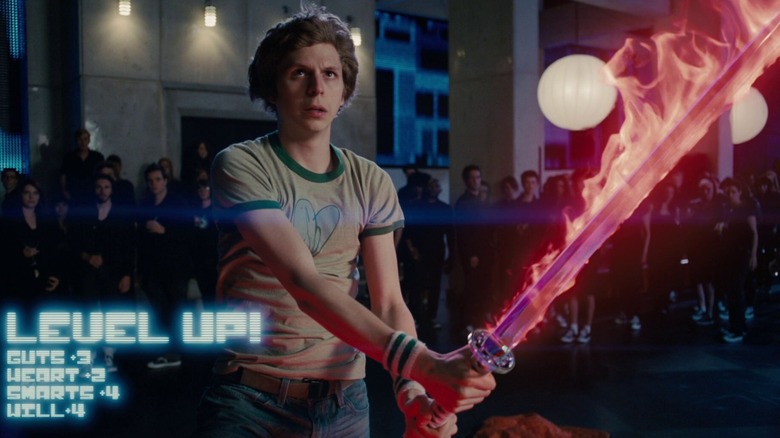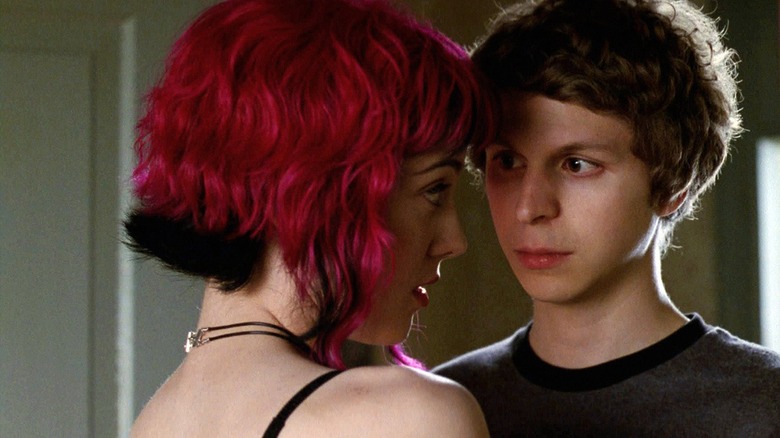How Michael Caine Helped Edgar Wright Capture Scott Pilgrim Vs. The World's Anime Aesthetic
Translating anime into live-action is a very difficult endeavor. Trying to capture the cartoonish and fantastic aspect of animation without appearing unrealistic or off is not an easy task, especially when animation can give us worlds and characters that can simply not be replicated in live-action without an insanely big budget.
Whether it's the "Fullmetal Alchemist" movie using really bad wigs, or the "Death Note" movie trying to convince us a story about a guy with a notebook that can kill people is super serious, actually, live-action anime rarely works. Of course, there are exceptions, like Robert Rodriguez's "Alita: Battle Angel" embraces the more over-the-top elements of its source material and results in a bonkers and fun experience. Then there's arguably the best live-action anime movie that is not really based on anime or manga (but will be adapted into one!), "Scott Pilgrim vs. the World."
The film may have bombed at the box office, but it has since become a cult classic, thanks to its great script full of one-liners, and a stacked cast that includes several major superhero actors. What makes it all click, however, is Edgar Wright's understanding of the visual aesthetics of video games and anime, with the film nailing the colorful, weird, at times over-the-top world of possibilities that anime can offer. It turns out, however, that we have Sir Michael Caine to partially thank for that.
'They used to call me the blink Nazi on set'
During an oral history of the film from Rotten Tomatoes, Edgar Wright spoke of one particular decision that helped capture the anime aesthetic in "Scott Pilgrim vs. the World."
"I wanted it to feel surreal, a bit like anime, and in animation, people don't really blink so much," Wright said, and he's got a point. Mostly due to budgetary reasons, anime shows and movies tend to skip drawing characters blinking, as they focus on more noticeable and exciting expressions and movements. After all, if you had the choice between seeing Tanjiro fight a demon with beautiful choreography in "Demon Slayer" or seeing him blink a few times, wouldn't you choose the fight? Wright continues:
"There's [also] a thing, like Michael Caine, his school of acting, page one is, 'Don't blink on a close-up,' it's like classic Michael Caine technique: 'Never blink on a close-up, it disempowers you, and it makes you look weak.' And it's true, if somebody doesn't know their lines, they're blinking like crazy, so I sort of thought it was a good thing [to ask for no blinking]."
This is not necessarily something you would notice watching the film, but it does seem to help the performances achieve a certain aura of strength and dominance.
"If you look at Brie Larson's performance, particularly, she's so strong and so unblinking," Wright adds. "So we got into this thing not blinking during takes, and they used to call me 'the blink Nazi' on set."
If only the lack of blinking was enough to turn the "Attack on Titan" live-action movie into something watchable.

